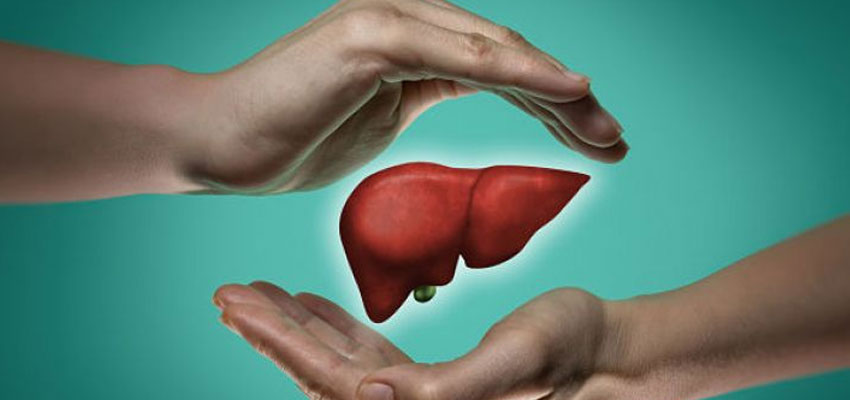
Grade 2 Fatty Liver: Symptoms, Risks, and Treatment Options
Tablet of Contents
Hepatic steatosis, another name for fatty liver, is a common disorder characterized by an overgrowth of fat in the cells of the liver.
It is divided into various grades depending on how much fat infiltration there is. A significant amount of liver fat accumulation is indicated by grade 2 fatty liver.

To give readers a thorough grasp of grade 2 fatty liver, this blog will go over its signs, dangers, and available treatments.
What is Grade 2 Fatty Liver?
The accumulation of fat in the liver is considered moderate in those with grade 2 fatty liver. Fat droplets infiltrate liver cells, causing them to swell and progress to the cirrhosis stage of fatty liver disease.
The liver is obviously impaired in grade 2 fatty liver, and the excess fat might compromise normal liver function.

Factors such as obesity, poor diet, insulin resistance, and excessive alcohol intake all have a role in the development of liver fat.
Fatty liver of the second grade is characterized by a greater degree of fat infiltration than that of grade 1.
Symptoms of grade 2 fatty liver may not present themselves until the problem has progressed, at which point patients may report fatigue, stomach discomfort, weight loss or increase that does not correspond to other factors, and high liver enzymes.
Consider reading about angiography vs angiogram here.
Untreated grade 2 fatty liver can progress to more advanced stages of liver disease like fibrosis and cirrhosis, which can have serious consequences for liver health and raise the likelihood of additional issues.
Changes in diet, exercise routine, body mass index, and alcohol use can significantly improve liver function and reduce the severity of grade 2 fatty liver.
The appropriate management of grade 2 fatty liver and the prevention of additional liver damage requires seeking medical guidance and monitoring liver health through regular check-ups.
Symptoms of Grade 2 Fatty Liver
It’s possible that there won’t be any outward signs of grade 2 fatty liver, especially in the early stages. But when the disease worsens, people may notice the following changes:
Grade 2 fatty liver is associated with fatigue and general illness. Reduced vitality and health can be the result of liver dysfunction.

Some people may feel a dull aching or fullness in the upper right quadrant of the abdomen (the liver’s location) that ranges from mild to moderate in intensity.
Fluctuations in Body Weight: People with grade 2 fatty liver may have fluctuations in body weight, either through unexplained weight loss or weight gain.

Liver enzymes including alanine transaminase (ALT) and aspartate transaminase (AST) may be high in the blood (AST). When liver cells are injured or inflamed, these enzymes escape and circulate throughout the body.
Jaundice (a yellowing of the skin and eyes), dark urine, and itching may also be grade 2 fatty liver symptoms. However, these signs are more indicative of severe liver disease and are much less prevalent.
You should also read about muskmelon benefits as well here.
Is Grade 2 Fatty Liver Dangerous?
Although worrying, grade 2 fatty liver does not pose an urgent threat to life. But if it’s not treated, it can advance to a more serious stage called fibrosis (scarring) or cirrhosis, which can have serious consequences for liver function and increase the risk of problems.
In order to prevent further liver damage, it is essential to treat grade 2 fatty liver as soon as possible.
Risks and Contributing Factors
There are a number of risk factors for developing grade 2 fatty liver, some of which are:
- Fat buildup in the liver is significantly linked to obesity and especially abdominal obesity.
- Saturated fats, processed carbs, and added sugars all contribute to an unhealthy diet, which in turn raises the risk of fatty liver disease.
- Fatty liver disease is connected to both insulin resistance and type 2 diabetes. Insulin resistance is characterized by decreased sensitivity to insulin.
- Factors that might lead to a grade 2 fatty liver include hypertension, hyperlipidemia, and metabolic syndrome.
- Drinking too much alcohol can lead to alcoholic fatty liver disease, a subtype of the more common fatty liver.
In case you want to know about lip surgery cost in india then here you are.
Treatment Options for Grade 2 Fatty Liver
Grade 2 fatty liver is treated by modifying the patient’s lifestyle and removing or treating the underlying causes. Examples of useful tactics include:
- Saturated fats, processed carbs, and added sugars should be kept at a minimum in order to maintain good health. Fruits, vegetables, whole grains, lean proteins, and healthy fats like nuts, seeds, and fatty fish should be prioritized.
- Liver fat can be decreased and liver function enhanced by adopting a calorie-restricted diet and engaging in regular physical activity.
- Weight loss, enhanced insulin sensitivity, and less liver fat can all result from a regular exercise regimen that includes aerobic and strength training as well as moderate-intensity exercises like brisk walking.
- If alcohol consumption is a factor in the development of fatty liver disease, it is crucial to abstain from or greatly restrict alcohol consumption.
- Essential steps in managing grade 2 fatty liver include getting underlying illnesses like diabetes, high blood pressure, and high cholesterol under control with medication, lifestyle adjustments, and close medical supervision.
- Medical practitioners may recommend medication for the management of certain underlying diseases and/or to aid in weight loss.
Unfortunately, there are few treatment choices available for fatty liver disease, and the decision to utilize medicine should be made on an individual basis.
You should also know about these medical terms you get in your prescription:
Fatty Liver Diet Chart

Conclusion
Without treatment, difficulties can arise from grade 2 fatty liver, which is characterized by a moderate degree of fat deposition in the liver.
Even if you don’t notice any problems right away, it’s crucial that you start making healthy changes to your routine as soon as possible.
Individuals can enhance liver health, decrease fat infiltration, and avoid the progression of fatty liver disease by adopting a balanced diet, engaging in regular exercise, managing weight, and treating underlying risk factors.
To promote optimal liver function and general health, those with grade 2 fatty liver should consult a healthcare practitioner for an accurate diagnosis, individualized therapy, and continuing monitoring.







जैसा कि आपने बताया है इस सिरप के उपयोग से बहते हुए खून को कंट्रोल में किया जा सकता है…